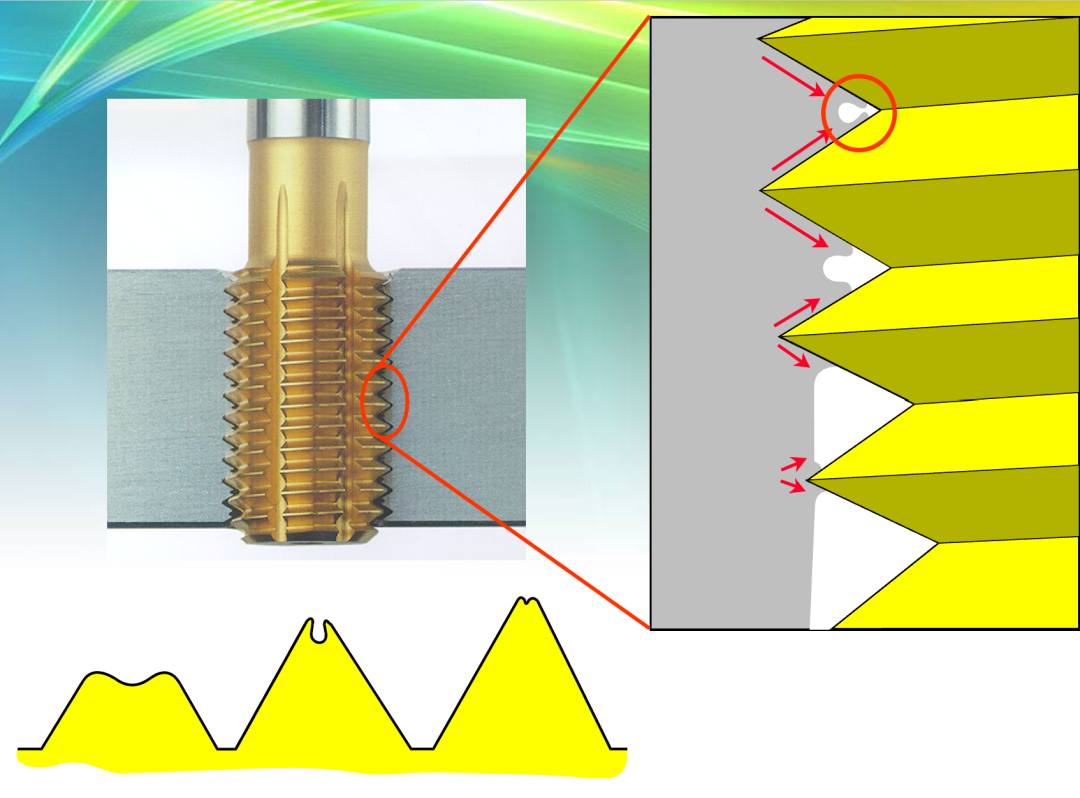The Ultimate Guide to Taps: Mastering Thread Cutting for Optimal Performance
Understanding Tap Classification: Choosing the Right Tool for the Job
Cutting Taps
Cutting taps physically remove material to form threads through chip formation:
-
Straight Flute Taps
- Ideal for through-holes and blind holes
- Handle short-chipping materials like cast iron effectively
- Simple design but produces lower thread quality due to chip accumulation
-
Spiral Flute Taps
- Designed for blind holes (depth ≤ 3xD)
- Helical flutes evacuate chips upward
- Performance varies by helix angle:
- 10-20°: Handles threads ≤ 2xD
- 28-40°: Processes threads ≤ 3xD
- 50°: Manages threads ≤ 3.5-4xD (special conditions)
- Occasionally used for through-holes in difficult materials
- Spiral Point Taps (Gun Taps)
- Exclusively for through-holes (depth ≤ 3-3.5xD)
- Pushes chips downward with a distinctive pointed tip
- Lower cutting torque and superior thread finish
- Best solution for high-volume production lines
Extrusion Taps
Form threads through material deformation rather than cutting:
- Work for both through and blind holes
- Cold-forging action creates smoother, denser threads
- Key advantages:
- Higher strength due to work-hardened threads
- No chips eliminate clogging risks
- Faster cutting speeds possible
- Limited to ductile materials
- Structural variations:
- Without oil groove (blind holes)
- With oil groove (all applications – rare in small diameters)
Anatomy of a Tap: Critical Structural Parameters
1. Dimensions That Drive Performance
- Total Length: Must accommodate specific depth requirements
- Shank Configuration: Standards include DIN, ANSI, JIS, ISO
- Cutting Length: Governed by pitch – longer lengths extend tool life
- Calibration Section: Provides stability but increases resistance
2. Thread Form Essentials
- Precision Class: Matched to thread standards (e.g., ISO 1-3 ≈ H1-H3)
- Chip Flute Design: Impacts chip formation and evacuation efficiency
- Rake/Relief Angles: Affect sharpness and cutting forces
- Flute Count: More flutes improve life but reduce chip space
Material Science: The Foundation of Tap Durability
-
Tool Steel
Basic material for manual taps (declining usage) -
HSS (M2/M3)
Standard for most industrial applications -
Cobalt HSS (M35/M42)
Enhanced heat resistance for tough materials -
Powder Metallurgy HSS
Superior toughness and edge retention for demanding jobs - Carbide Grades
Micro-grain formulations for abrasive materials (cast iron, aluminum alloys)
Industry Insight: Leading manufacturers continuously develop proprietary alloys balancing cobalt-free formulations with premium performance.
Coating Technologies: The Surface Advantage
| Coating Type | Color | Hardness (HV) | Max Temp (°C) | Best For |
|---|---|---|---|---|
| Steam Oxide | Black | – | 300 | Carbon steels |
| Nitrided | Gray | – | 500 | Cast iron, aluminum |
| TiN (Titanium Nitride) | Gold | 2,300 | 600 | General purpose |
| TiCN (Titanium Carbonitride) | Blue-gray | 3,000 | 400 | Alloy steels |
| TiAlN (Aluminum Titanium Nitride) | Gray | 3,300 | 900 | High-speed machining |
| CrN (Chromium Nitride) | Silver | – | 700 | Non-ferrous metals |
Innovation Spotlight: Advanced coatings like LMT’s "Qi" layer combine nanocomposite structures for reduced friction and exceptional adhesion.
Mastering Tapping Parameters: The Process Ecosystem
Critical Process Variables:
- Equipment Setup: Rigid systems enable higher precision and speeds
- Tool Holding: Synchronized toolholders outperform compensated designs
- Coolant Strategy: Lubrication > Cooling (emulsion >10% concentration)
- Cutting Parameters (Feed/Speed):
- Start with manufacturer recommendations
- Reduce speeds when facing:
- Workpiece hardness variations
- Extended tool lengths
- Horizontal machining orientation
- Manual operations (drill presses)
Precision Engineering: Navigating Tolerance Systems
ISO Tolerance Standards vs. Japanese Systems
- OSG Cutting Taps (OH system): Starts at low limit in 0.02mm increments
- OSG Extrusion Taps (RH system): Starts at low limit in 0.0127mm steps
| ISO Class | Tolerance Band (mm) | Typical Application |
|---|---|---|
| 4H | 0.100 | Aerospace fasteners |
| 5H | 0.125 | Automotive components |
| 6H | 0.150 | General engineering (most common) |
| 7H | 0.175 | High-temperature alloys |
Expert Tip: For gray cast iron, select class 6G taps to account for bore expansion from tool wear.
The Six Commandments of Tap Selection
- Thread Standard: Metric, UN, Whitworth, etc.
- Hole Configuration: Through-hole vs. blind hole
- Workpiece Material: Steel, aluminum, superalloys?
- Depth Requirements: Hole depth vs. full thread depth
- Precision Class: Tolerance requirements
- Tool Specifications: Length, shank type, coating
Optimizing for Challenging Applications
Interference Scenarios:
- Reduce Vc (cutting speed) by 40% and Fz (feed) by 30% in unstable setups
- Use spiral point taps where chip evacuation is critical
- Remember that extrusion taps demand perfected hole size (±0.05mm)
Case Study: High-silicon aluminum components saw productivity increase 220% after switching from TiN-coated straight flute taps to CrN-coated spiral flute designs with optimized helix angles.
Conclusion: Precision as Philosophy
Mastering the science of taps transforms threading from a necessary operation to a strategic advantage. The 0.01mm tolerance decisions, the 5° helix angle adjustments, and the molecular-level coating selections collectively determine whether a production line meets quotas or faces downtime. The most successful manufacturers don’t just use taps – they engineer threaded connections with the precision of watchmakers, leveraging every advancement in metallurgy, coating technology, and geometry optimization to achieve flawless, efficient thread production.
(Note: Technical specifications are based on industry standards; always verify with your tooling supplier for application-specific recommendations.)


















